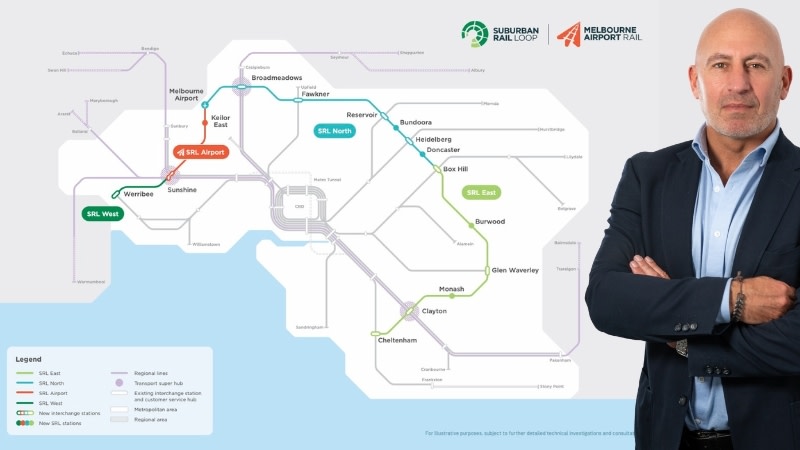Suburban Rail Loop ‘Magnet for Investment’

The first stage of Melbourne’s giant suburban rail loop project will become a powerful magnet for investment and economic activity in the city’s south-east, according to the authority’s planning chief.
The six new underground stations from Cheltenham to Box Hill will create new housing, restaurants and cafes, nightlife and shops, new businesses and anchor tenants.
“By 2056, the Box Hill SRL precinct will have a similar population and number of jobs as South Yarra today,” Suburban Rail Loop Authority executive general manager Ludo Campbell-Reid said.
“Already we’re seeing suburbs like Clayton and Oakleigh offer the café culture, restaurants and entertainment experiences that people used to come into suburbs like Richmond, Carlton and Fitzroy for.”
The Suburban Rail Loop Authority is responsible for the design and delivery of the 90km rail ring around Melbourne’s middle suburbs that will connect every metropolitan train line from Cheltenham to Werribee, via Melbourne Airport.
Campbell-Reid said two of the four stages of the giant Andrew’s government project are already under way—the eastern section as well as the northern section to Melbourne Airport.
“Works are ramping up as the team moves utilities and services to pave the way for the tunnel boring machines, which will begin drilling 26km of twin tunnels, and also for the complex construction of six new underground stations,” Campbell-Reid said.
The eastern section is budgeted to costs $35 billion and open by 2035.
Campbell-Reid warned that if Melbourne’s population reaches around nine million by the 2050’s—or about the same size as London today—it would have to become a “city of centres”.

“Melbourne wasn’t designed for nine million people,” he said.
“Despite the government’s record investment in big build transport infrastructure projects, new schools and hospitals, our growing pains will become untenable into the future.
“We need to recalibrate how we are growing, so over time we grow in the right way, in the right places. Here’s where SRL comes in.”
He said the suburban rail loop would redirect Melbourne’s property market.
“It influences where a business chooses to locate and where a person chooses to live,” he said.
“When new areas become more attractive because of the local infrastructure, this redirects the property market and intensifies urban development, leading to a shift in urban form.”
Campbell-Reid told his audience it was critical to embed climate change mitigation at every level of city planning, urban design, governance and administration.
“Beyond the policy leadership set by government, including targets for net zero emissions and the recycling first initiative, there is an enormous opportunity to leave a lasting climate legacy in our SRL precincts.”
He said the project would deliver thousands of bike parks at the rail link’s eastern stations, and more than 15km of new and enhanced walking and cycling paths around them. Stations will have a minimum five-star Green Star rating and trains would run on 100 per cent renewable energy.
The city planner acknowledged the giant project is not without its critics, mostly over the cost and size of it, as well as the timeline.
When first announced the project was to have cost about $50 billion.
But in a report released late last year the state parliament’s budget office said the north and east sections of the rail loop could blow out to more than $125 billion before completed.
And the long-term future of the project is only as good as the government of the day—there are no guarantees future state governments will continue to fund the rail link.














